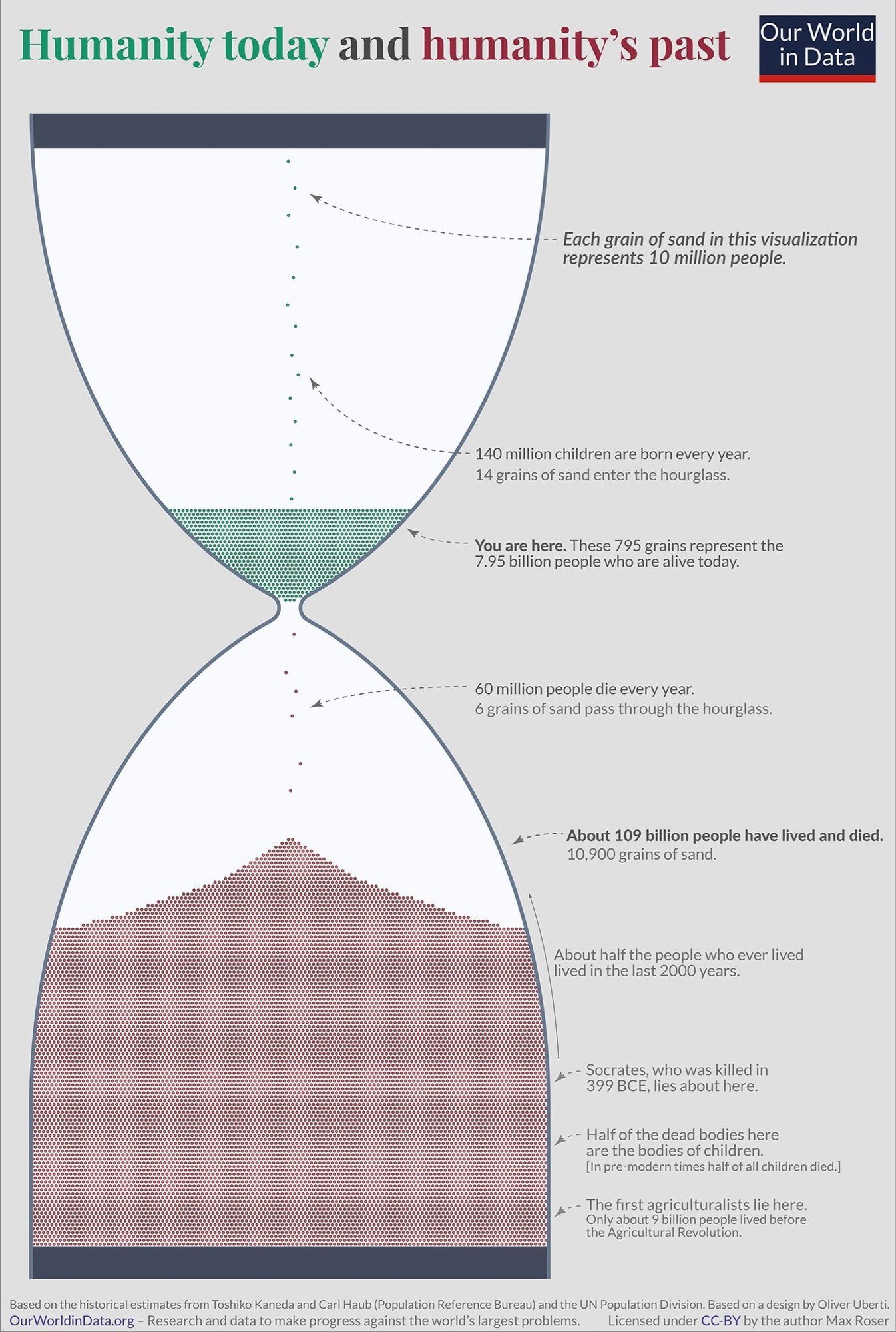this post was submitted on 23 Jun 2024
576 points (99.1% liked)
Damn, that's interesting!
4688 readers
1 users here now
- No clickbait
- No Racism and Hate speech
- No Imgur Gallery Links
- No Infographics
- Moderator Discretion
- Repost Guidelines
- No videos over 15 minutes long
- No "Photoshopped" posts
- Image w/ text posts must be sourced in comments
founded 3 years ago
MODERATORS
you are viewing a single comment's thread
view the rest of the comments
view the rest of the comments

You asked for data and methods. I didn't post or make this. I just gave you the sources that were already available to you. If you want to check the sources, go right on ahead. But since you can't seem to find things on mobile, here's an excerpt from the sites section of population data.
And a specific citation from that same site for the prehistoric data..
-Posted via Sync for Lemmy.
That’s one of your key answers there:
The infographic is counting humans back to 10,000 years ago for the total dead.
But elsewhere in this thread, people are saying bipedal apes with human sized brains have been around anywhere from 50k to 5m years.
So if we’re willing to count our slightly different cousins, whom we could probably relate to if we met them, the column of the dead in the picture would be much deeper.
That makes me think being skeptical was a good idea here. 10 kya cutoff is an interesting and significant piece of this graphic.
All of evolution is a sliding scale. There is no strict delineation.
I never claimed this was a good piece or true or perfect. That "scientist" was being over the top and purposefully myopic with sources provided, they still only desired to shit on someone else's work and then state I didn't read the methods.
There are no real hard facts for that era of time population wise. It's all estimation based on something. It just depends on how you draw the lines in the sand.
There are no hotdogs, there are no sandwiches. It's all a construct of human applied labels.
But I generally agree. 300k years is a long time.